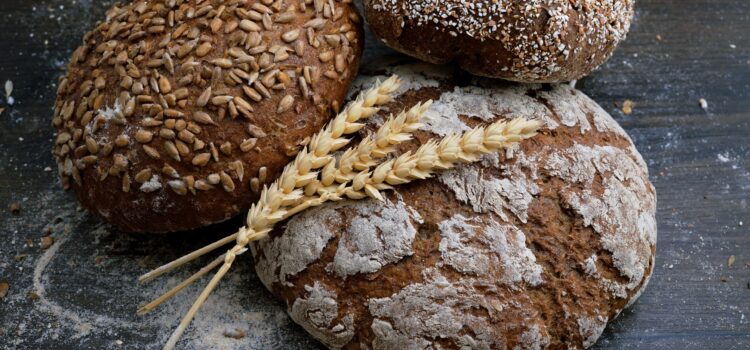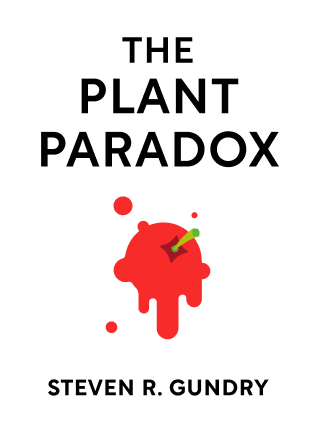

This article is an excerpt from the Shortform summary of "The Plant Paradox" by Steven R. Gundry. Shortform has the world's best summaries of books you should be reading.
Like this article? Sign up for a free trial here .
What is wheat germ agglutinin? Is it the same thing as gluten? How does it affect the body?
Wheat germ agglutinin (WGA) is a lectin found in wheat. The lectin WGA has a number of harmful effects including weight gain and inflammation.
Read more about wheat germ agglutinin does and where the lectin WGA is found.
Wheat Germ Agglutinin Is More Harmful Than Gluten
Of the four sources of gluten, wheat is the most prevalent in most people’s diets, and not only does it have addictive qualities, but it also promotes weight gain.
This means, contrary to what you’ve been taught, white bread and white rice are less fattening and easier on your digestive system than wheat bread and brown rice. Skeptical? Consider this: The billions of people in Asia who eat rice as a staple in their diets eat white rice, and on the whole, they don’t suffer from epidemics of obesity, heart disease, and diabetes as commonly as Americans do.
Gluten is actually not the most harmful lectin in wheat—wheat germ agglutinin (WGA) is. WGA is found in the bran (that’s what makes whole grain bread brown) and is smaller than most lectins, so it passes more easily through the intestinal wall. The lectin WGA tends to bond to joint cartilage, prompting an immune system attack on the joints, which results in inflammation and joint pain.
Effects of the Lectin WGA
Furthermore, wheat germ agglutinin has these following harmful effects:
- Acts like insulin, causing weight gain and insulin resistance by pumping sugar into fat cells, where that sugar turns into fat
- Blocks sugar from nourishing muscles, instead turning that sugar into fat
- Impedes digestion of protein
- Contributes to inflammation
- Reacts with other proteins, producing antibodies that prompt the immune system to attack healthy cells
- Crosses the blood-brain barrier (the border between circulating blood and the brain), bringing whatever cells it’s bonded to, which causes neurological issues
- Kills cells indiscriminately
- Interferes with DNA replication
- Causes the arteries to harden with plaque (atherosclerosis)
- Helps viruses enter the body
- Promotes kidney inflammation (nephritis)
When people go gluten-free, they eliminate wheat, barley, rye, and oats from their diets, opting for alternatives like flours made from corn, buckwheat, quinoa, and other grains and pseudo-grains. Although they’re avoiding the lectins gluten and wheat germ agglutinin, these gluten-free foods are still full of other lectins, so while people think they’re sparing their guts, they’re still consuming gut-disrupting lectins.
Whole Grains Signal Your Body to Store Fat
As we talked about, the lectin WGA—which is found in whole grains—has a barcode that fools your body into thinking it’s insulin. To understand how this affects you, let’s look at what jobs insulin does, and what WGA does in its place.
When you eat sugar and the glucose enters your bloodstream, your body releases insulin in response. That insulin then fits into the docking port of three types of cells to give them each instructions on what to do with the sugar.
- In fat cells, the insulin instructs the cell to convert the glucose to fat and store it.
- In muscle cells, insulin helps the cell to absorb the glucose and use it as fuel.
- In nerve cells (neurons), the insulin helps the cell to absorb the glucose and use it as fuel.
After insulin has given its instructions to each cell, it leaves the docking port, so that the port is available for the next hormone to dock and give its unique instructions. However, lectins like WGA enter the docking ports and never leave, preventing the cells from getting the information they need from other hormones.
Wheat Germ Agglutinin Mimics Insulin
This is how wheat germ agglutinin behaves when it mimics insulin.
- In fat cells, WGA also instructs the cell to convert glucose to fat—but WGA never un-docks, so it’s constantly telling the cell to grab any sugar that passes by and convert it to fat for storage. This would’ve helped our ancestors survive by maximizing the fat (and energy) they got from minimal calories, but it’s not necessary for modern humans.
- In muscle cells, WGA simply hogs the docking port, preventing insulin from helping the cell absorb glucose. As a result, the glucose is sent off to another fat cell and the muscle gradually weakens without the necessary fuel.
- In nerve cells and neurons, WGA also blocks insulin from helping the cells absorb sugar. The consequences to this are twofold: First, it makes your brain think you need more calories and prompts you to eat more (again, this would’ve been a benefit to our ancestors when winter rolled around). Second, it starves brain and nerve cells, contributing to dementia, Parkinson’s, and peripheral neuropathy.

———End of Preview———
Like what you just read? Read the rest of the world's best summary of Steven R. Gundry's "The Plant Paradox" at Shortform .
Here's what you'll find in our full The Plant Paradox summary :
- Why eating more vegetables isn't enough, and why some vegetables are toxic to your body
- The science behind lectins and how they tear apart your body, making you fat and sick
- The 6-week program to get your body back on healthy grack






